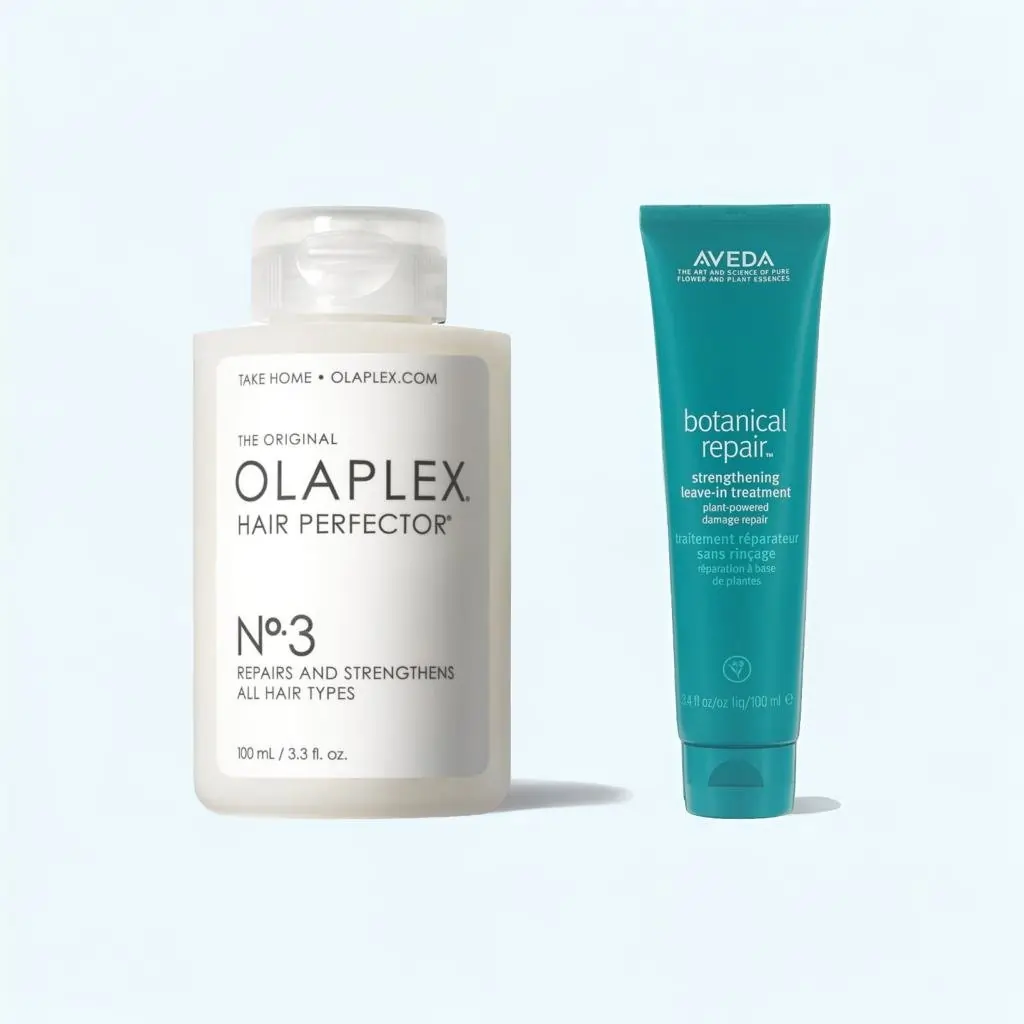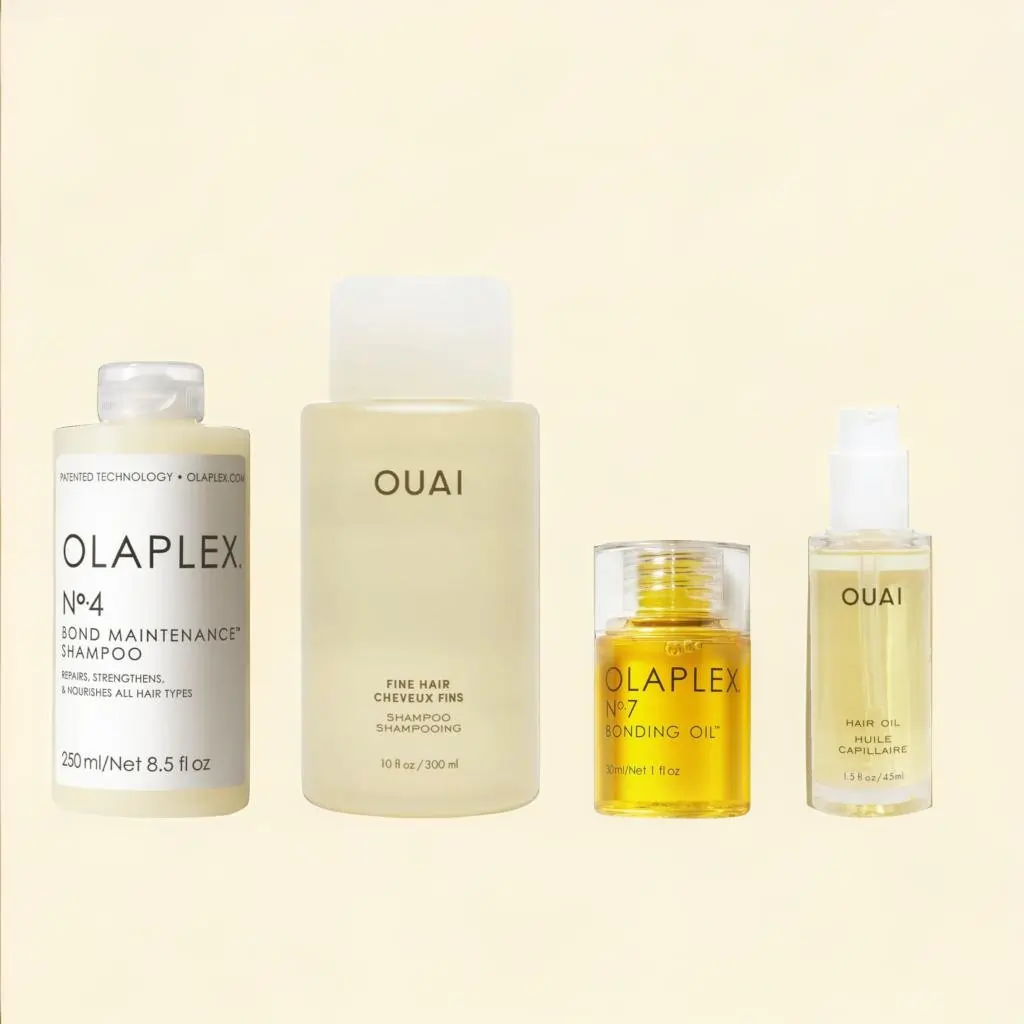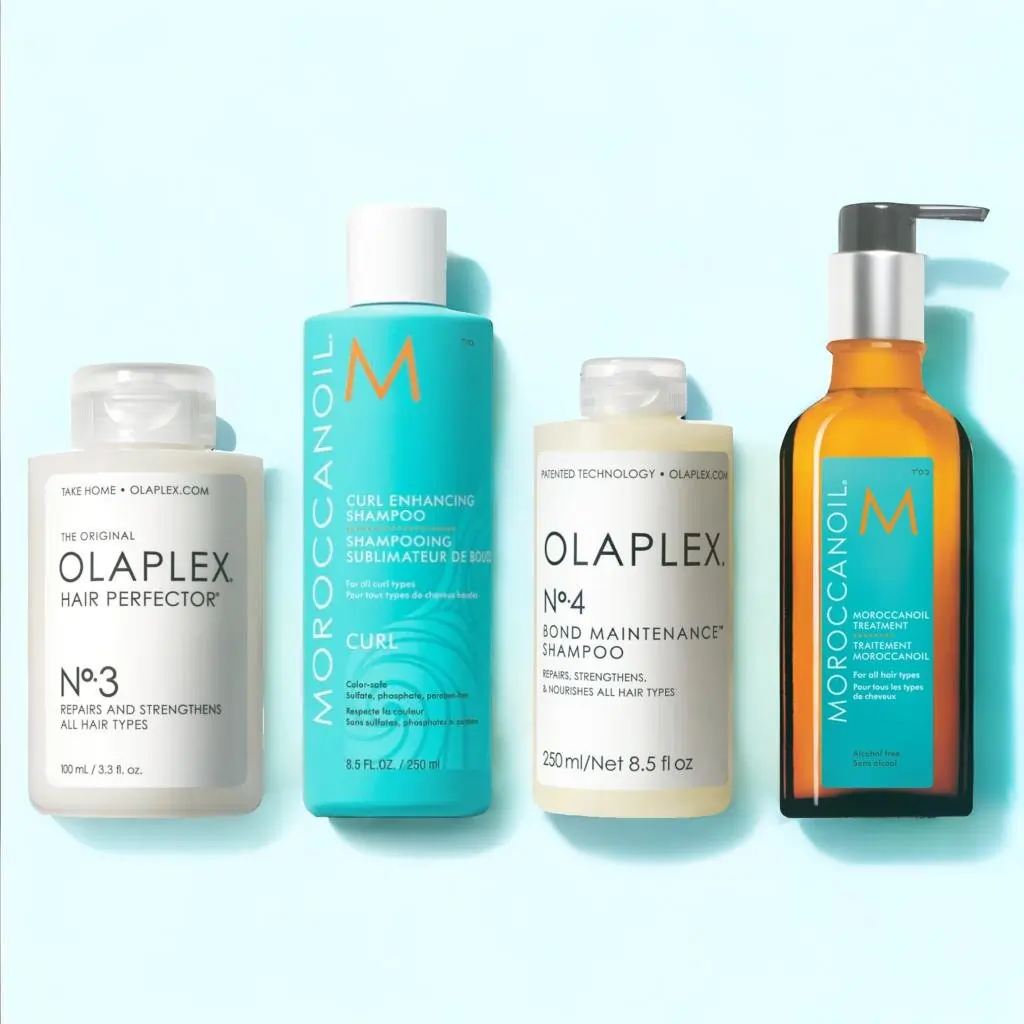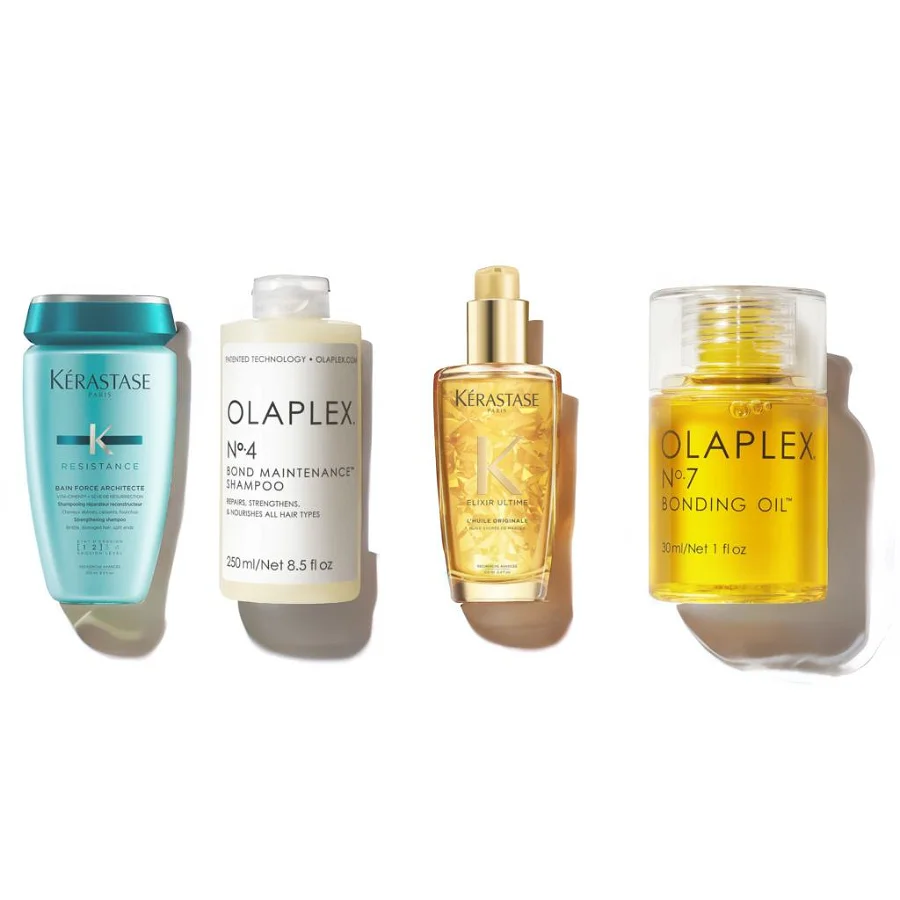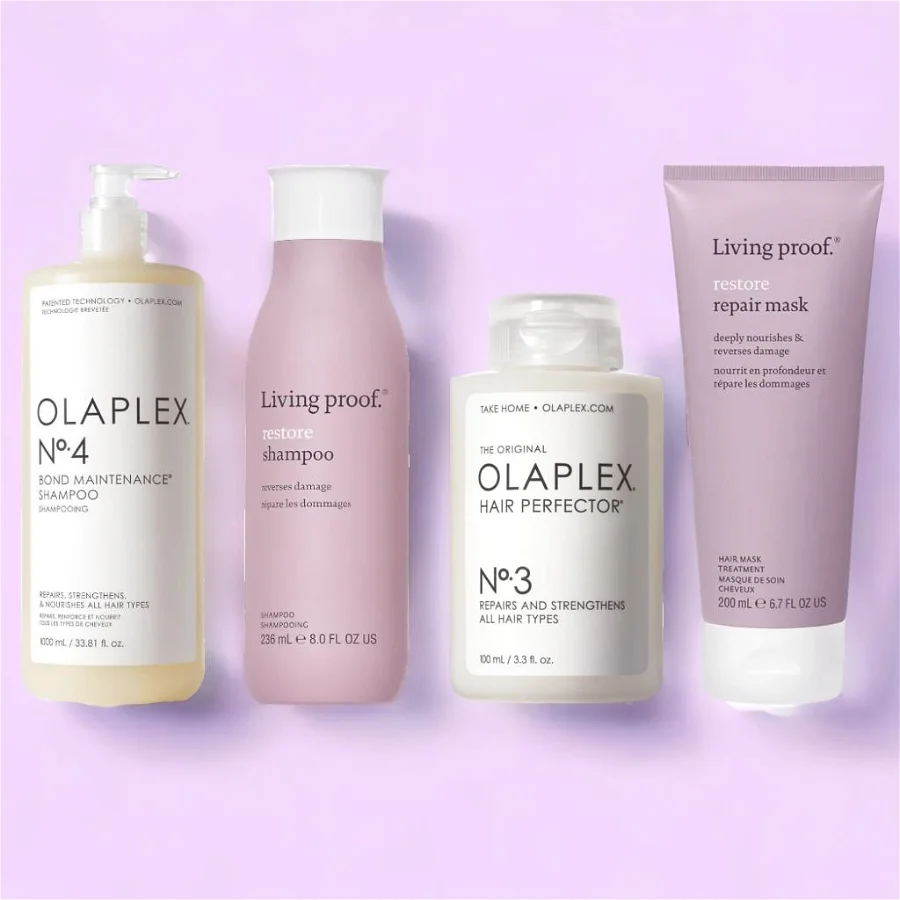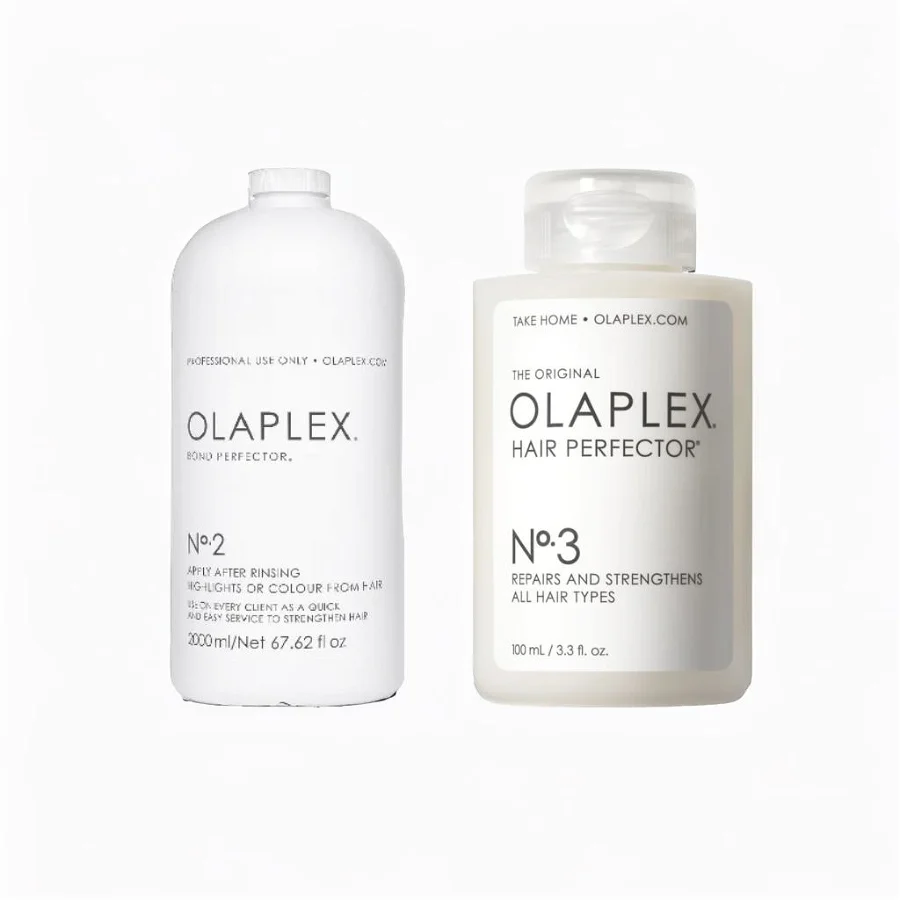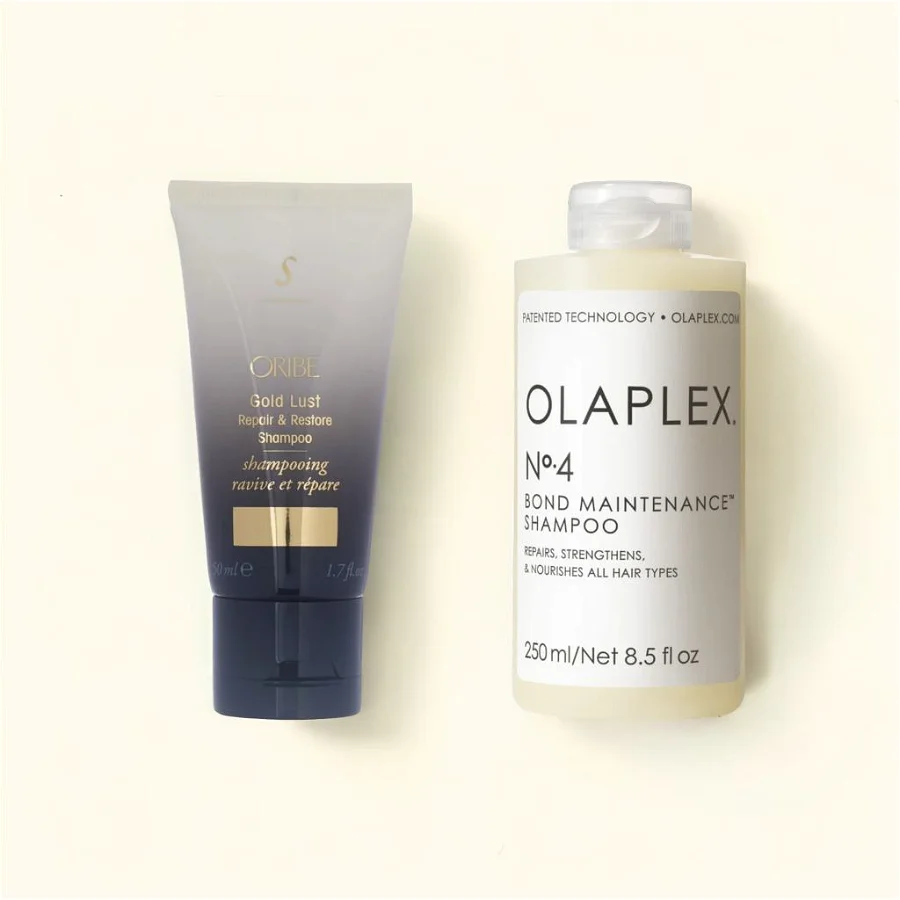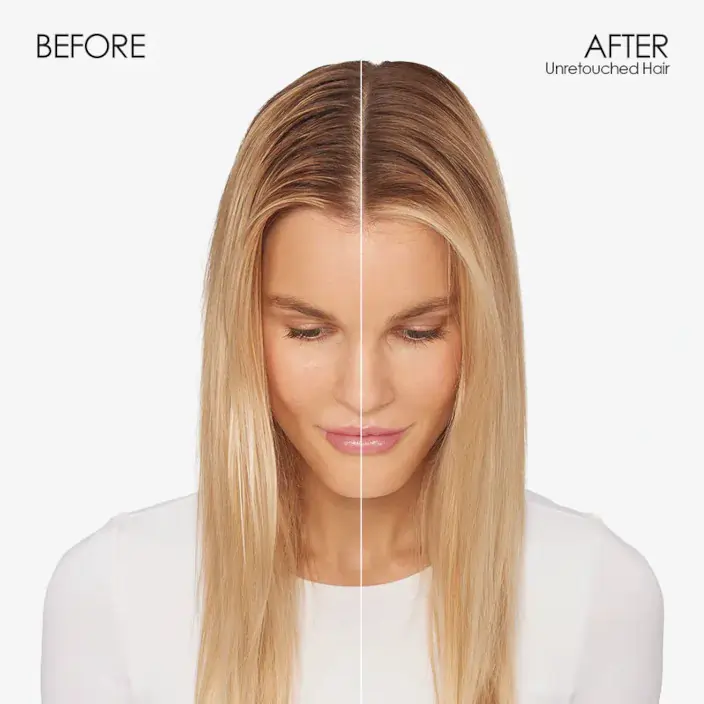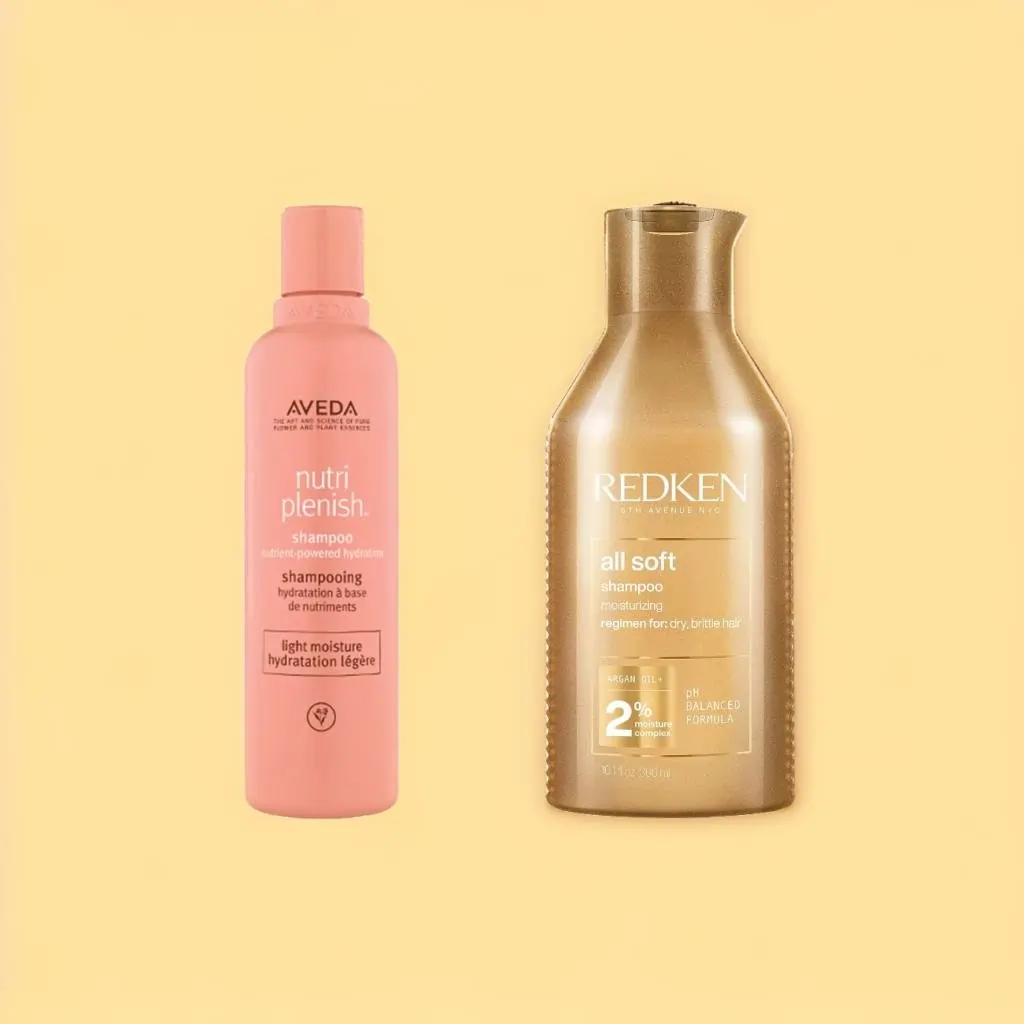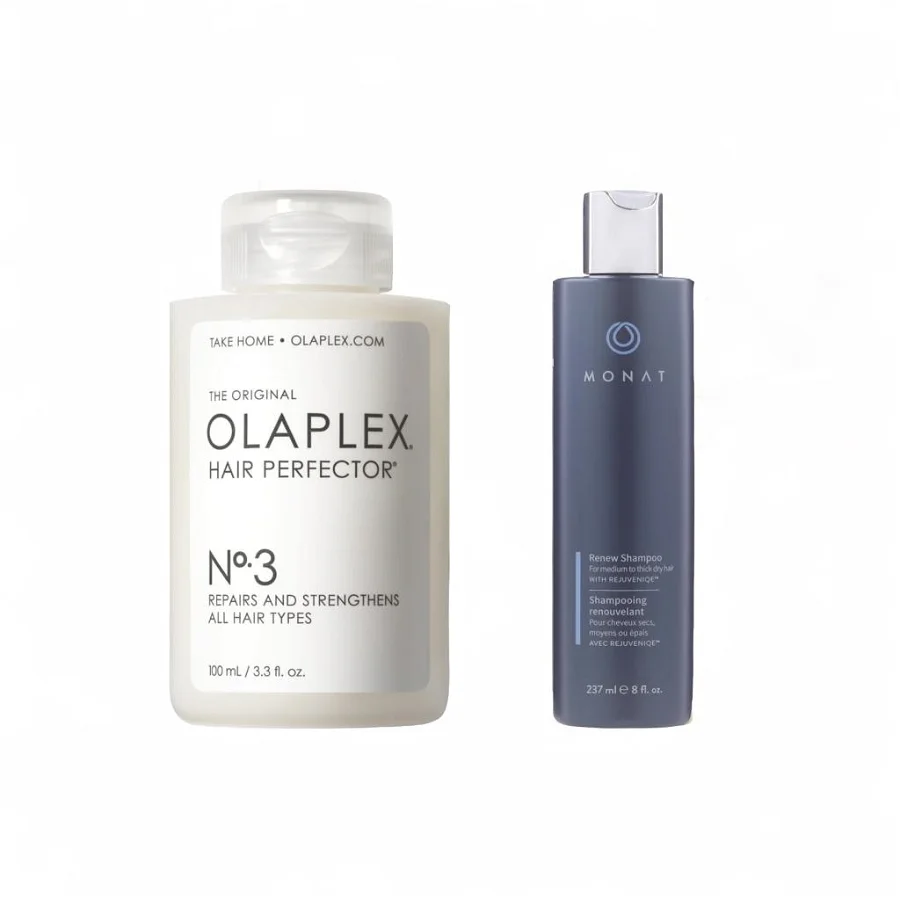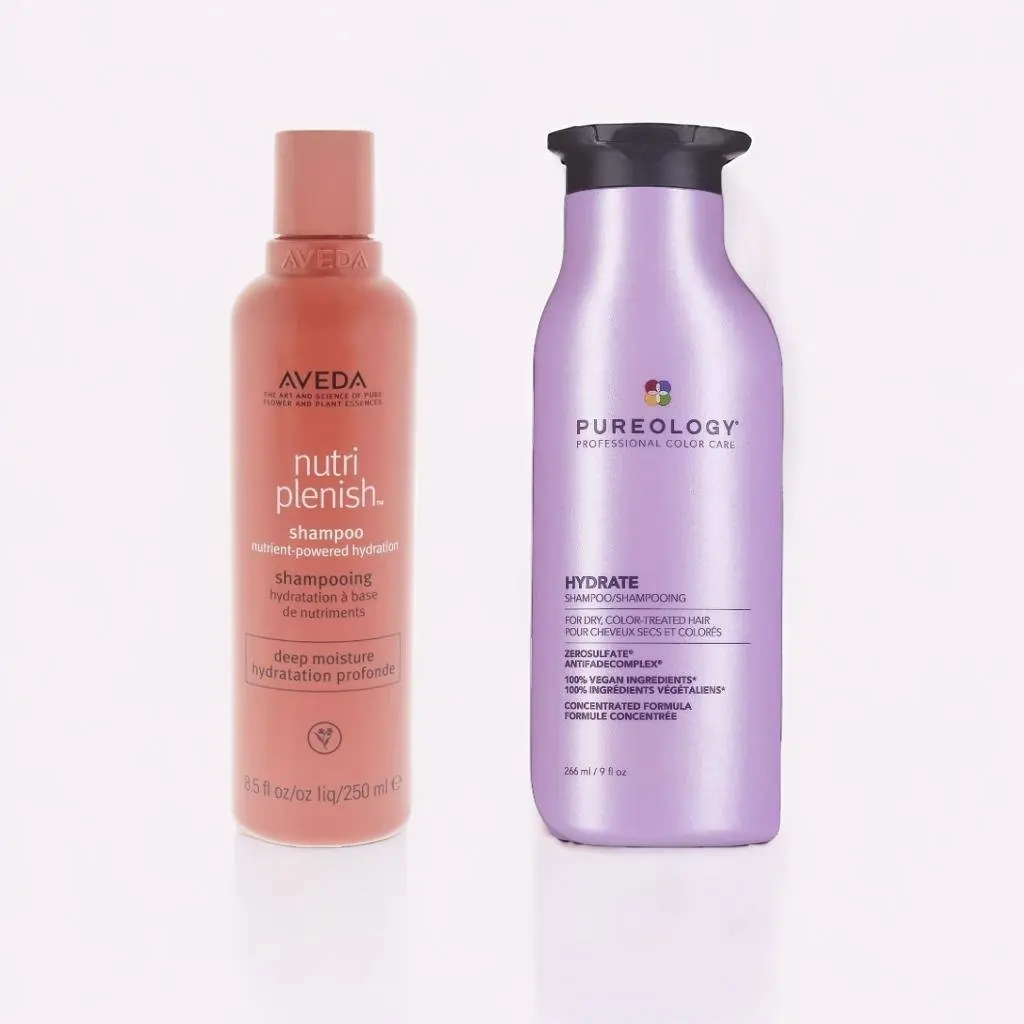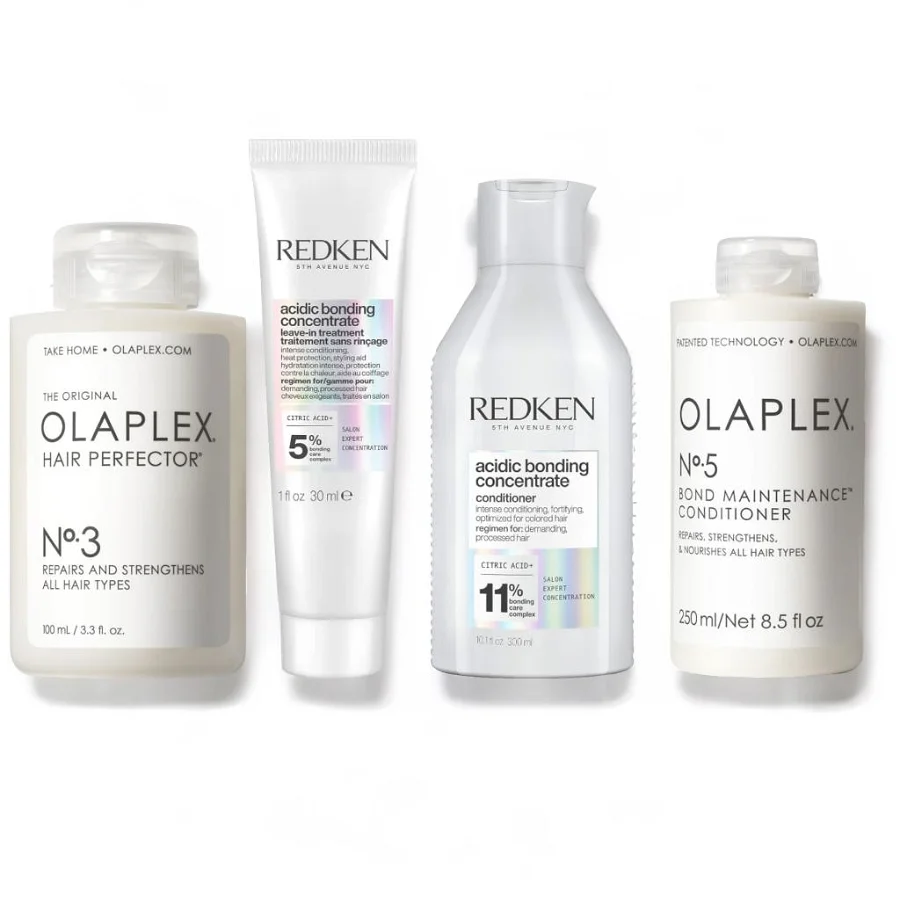
We're positive you've seen Aveda and Olaplex on the shelves at your local beauty store or hair salon before.
Which is better, you ask? That's what we'll be finding out today as we compare the two side-by-side. Aveda Botanical Repair vs Olaplex - let’s get into it.
Aveda vs Olaplex Treatment
If you’re struggling with dry, dull, and straw-like strands, it’s likely that your hair is damaged at the cuticle. When faced with harsh external aggressors like heat and chemicals, the hair shaft becomes cracked and fragile, which is what causes once luscious locks to turn brittle and lifeless. Whether the damage has been caused by excessive heat styling, overdyeing, or simply from spending too long in the sun, all it needs is a nourishing treatment to nurse it back to life.
Fortunately, there are many strengthening treatments available to target even the most damaged hair, all of which can be done from the comfort of your own home. Olaplex No.3 and Aveda’s Botanical Repair Strengthening Leave-In Treatment are two of the hottest hair products on the market right now - read on to find out which one is the best choice for you.
Let’s start with the similarities. Both of these products have been carefully created for use on all hair types, including coloured and textured hair, and are wonderfully vegan and cruelty-free - in their ingredients list and manufacturing process. They’ve been specifically designed to rebuild and strengthen hair bonds, with scientists at Aveda said to have spent over six years developing their formula.
Both hair treatments are easy to incorporate into your current routine, and will have a brilliant, strengthening effect on your damaged hair. Their focus on inner, structural bond repair works from the inside out to provide a lasting impact, rather than simply masking the damage with a softer, conditioned exterior.
While both can offer long-lasting results, product reviews suggest that users will see a more immediate impact with Aveda’s Repair Treatment, particularly as Olaplex works best when used in conjunction with its other products. Furthermore, Aveda provides heat protection up to 230°C and a more enviable, plant-based ingredients list; green tea, avocado, and sunflower seed oil are all great emollients for creating soft, smooth hair.
Aveda is priced slightly higher than Olaplex No.3, although the latter of course comes with a larger cult following that shows no sign of slowing, and therefore stands as the more reliable product.
Aveda vs Olaplex Shampoo
When you have damaged hair, it’s important that you are addressing it with every step of your hair care routine. You shouldn’t rely on just a single treatment to do all the heavy lifting - your shampoo should be pulling its weight, too.
No.4 in the Olaplex hair care line is their Bond Maintenance Shampoo. It’s described as a ‘highly nourishing and reparative shampoo’, and is designed as a hydrating cleanser for every hair type. Whether you’re struggling specifically with damaged hair, or just looking for an everyday shampoo to maintain the health of your tresses, it has the potential to become a staple product in your bathroom.
The shampoo in Aveda’s Botanical Repair range is a must-buy for those with dry hair. Like the leave-in treatment, it boasts naturally-sourced ingredients as part of its three-layer technology - providing nourishing treatment to the cortex, cuticle, and f-layer.
Olaplex No.4 and Aveda’s shampoo are both intended for frequent use, on hair that needs a deep cleanse without the risk of being dried out further. Although both are fairly pricey, they offer a deep enough clean, and fast enough results, to avoid the need for washing more than every other day.
To help you choose between these two great options, consider what you need most from your shampoo. Olaplex is more focused on the repair of significantly damaged hair, particularly from heavy bleaching, dyeing, and heat styling. Reviewers love its ability to make brittle hair much thicker, smoother, and less prone to breakage.
On the other hand, Aveda is praised for its through cleansing properties: the focus on removing excess sebum is perfect for lacklustre hair that’s oily at the scalp and dry at the ends, which can occur as a result of product build-up and daily exposure to pollution.
Aveda vs Olaplex Conditioner
When it comes to conditioner, the final and potentially most important step in the hair wash routine, you’re spoiled for choice with these two brands. A focus on bond repair and damage control continues into their conditioning products, which is great news for those who want to say goodbye to dull, fragile hair once and for all.
Let’s compare the Olaplex No. 5 and the Aveda Botanical Repair Strengthening Conditioner.
The goal of both conditioning products is to combat frizz, reduce flyaways, and eliminate knotty tangles. They boast all the great qualities of the other products in their respective series, as well as being free from silicones and parabens - which helps provide genuine conditioning.
As with most conditioners, users just want their product to give them hair that looks and feels healthier, without feeling overloaded with the product. Given that these both tick those boxes, it can help to choose a conditioner according to your shampoo. While there is room for experimentation when it comes to treatments and styling, it’s always wise to stick to the same product line for the main event.
That said, Aveda’s conditioner is 98% naturally derived, with an ingredients list nearly half the size of Olaplex No.5, and a quick analysis of these lists reveal that Aveda contains fewer harsh molecular components. Something that several users dislike about the Aveda, however, is the smell. If you tend to be sensitive to perfumed products, this could be the dealbreaker.
